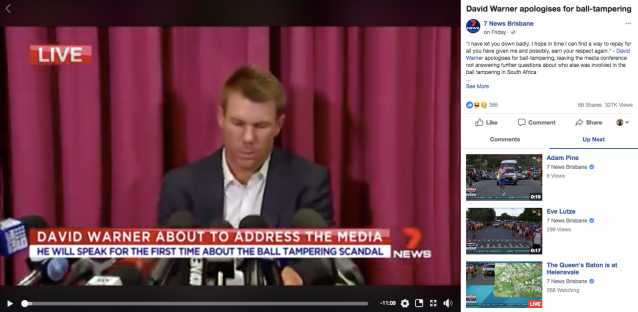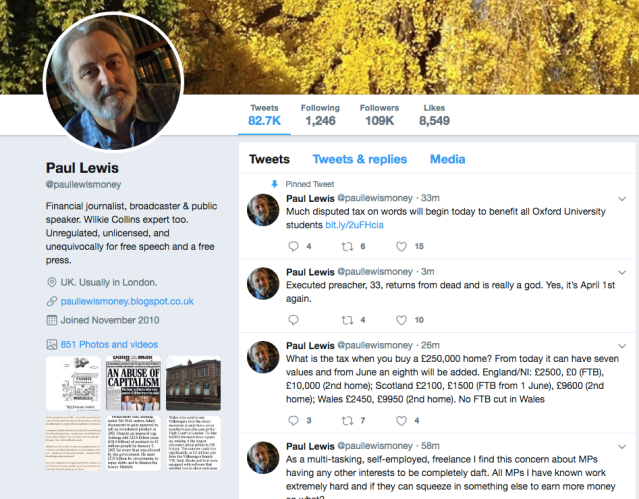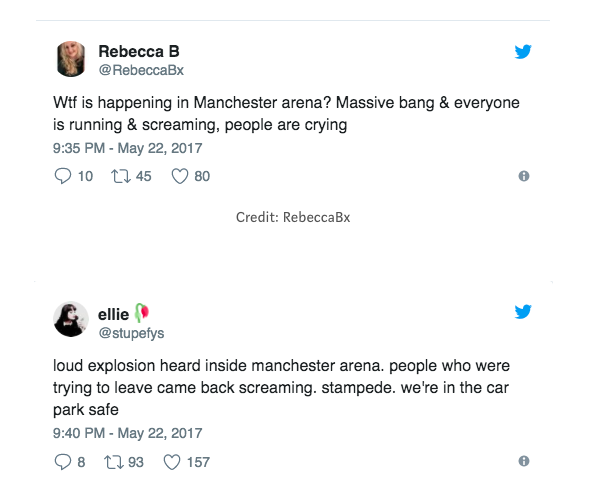In April last year, Pepsi released an advertisement “Live for Now” targeted at young consumers. However, it received so much wide spread criticism and backlash that it was removed within 24 hours of airing. Pepsi came to learn the hard way that not all publicity is necessarily beneficial to boosting a companies’ profile. This was a prime example of what could be seen as a social media ‘fail’ where the complexities surrounding the use of social media were misunderstood and mismanaged by Pepsi.
In the ad the iconic Kendall Jenner is in the middle of a photo shoot when she notices a protest in the street, she pulls of her blonde wig and wipes of her lipstick and strides towards the crowd to join them, beckoned by a guy who gives her a nod. The protesters hold signs that don’t refer to directly to anything, instead stating words such as “peace”, “love” and “join the conversation”. Jenner makes her way through the crowd as they smile, break dance and clap, even fist bumping an activist. She then proceeds to hand a Pepsi can to one of the policemen barricading the protest which causes the crowd to erupt into cheers whilst a Muslim woman photographs the moment. Many accused the ad for appropriating the worldwide ‘Black Lives Matter’ movement which campaigns against violence and systematic racism towards black people in the aid of selling a global soft drink brand.
The ad copped a lot of hate with people taking to twitter to exclaim their outrage:
https://twitter.com/BRANDONWARDELL/status/849371484128673794
Martin Luther Kings youngest daughter Bernice King really put things into perspective when she tweeted a photo to of her father during a peaceful protest being shoved back by one of the policeman barricading the march. The tweet caption’s “If only Daddy would have known about the power of #Pepsi” (Smith, A. 2017). Pepsi released a statement stating that they were “trying to project a global message of unity, peace and understanding. Clearly we missed the mark, and we aplogise. We did not intend to make light of any serious issue. We are removing the content and halting any further rollout. We also apologise for putting Kendal Jenner in this position” (Pepsico, 2017).
For years now, soft drink companies have angled their campaigns at the younger generations partnered with a global unity message. One of the first well known attempts being Coca-Cola’s 1971 “I’d like to buy the world a Coke”. However, between 1971 and now people got the tools to respond to a misguided mashup on a mass scale (Watercutter, 2017). Pepsi failed to take into consideration external factors such as consumer attitudes towards this outdated and overused marketing approach.
The main factor that influenced such a negative fuelled response to Pepsi’s campaign creating a social media ‘fail’ was their racial insensitivity. It should have been obvious to Pepsi that appropriating a Black Lives Matter scene with a white supermodel taking center stage would have ignited a public outrage. Activist DeRay McKesson makes a point to the NBC News stating that “this ad trivializes the urgency of the issues and it diminishes the seriousness and gravity of why we got into the street in the first place” (Smith, A. 2017).
Due to Twitters extremely fast pace and reliance on user generated content, this gives people the ability to spread negative feedback like wildfire. Twitter allows for a participatory culture due to it’s low barriers to expression/engagement and strong support for sharing with others (Cassidy, 2018a). While social activity would exist without Facebook or Twitter, the kind of social activities that occur there depends powerfully on the space and structure they provide because platforms don’t just mediate public discourse, they constitute it (Gillespie, 2017). Consumers play an active role in spreading content and actively shaping “media flows”, being the grass root advocates for materials which are personally and socially meaningful to them (Fuchs, 2014). Pepsi outlined that they hoped to unite the world in a positive light, however managed to achieve the exact opposite with everyone working against their favor. Everyone felt some degree of connection by taking part in a negative outrage. In this case the power role was reversed and Pepsi lost all control over their reputation. The flow of information harmed the brands image on a global scale, crushing the chance for the campaign to have any positively associated spreadability or searchability. Pepsi severely underestimated the power of consumers and in future should invest more time into understanding social media as a marketing tool and not take their campaigns so lightheartedly.
Pepsi could have avoided this type of response had they undertaken a different approach towards their social media strategy. Firstly, there was a major lack of research into the target audience and their current perceptions surrounding these types of issues. This could have been conducted in both quantitative and qualitative forms involving interviews, data analysis and surveys. Gaining an outsiders perspective could have avoided these cultural blind spots.
By testing concepts with a wider sample of people the marketer can then see if they respond with the kind of reaction they hope to elicit. An effective marketing strategy involves consumers from the selected target audience every step of the way from the planning to the creative process’s. A Test and Learn Matrix (Cassidy, 2018b) would have been beneficial in these circumstances. This enables the company to essentially test and learn what type posts evoke the best response and engagement from consumers. In doing so Pepsi could have gained further insights into their target audience and avoided creating marketing content that had conflicting interests to their consumers.
Within these social networks there are “networked publics” and from a social media platform perspective it is crucial to remember that it can be difficult to collapse these contexts and contend with groups of people who reflect different social contexts and have different expectations as to what’s appropriate (Boyd, 2010). Pepsi failed to recognise that their target audience did not all share the same outlook particularly in regards to racial issues. Pepsi should have considered the current events as well as the political and social climate at the time. Regardless of an individual’s values s and what they believe is “correct”, marketers uphold a greater responsibility of removing their own viewpoint from the equation and honoring what the brand represents to consumers (Smith, J. 2017). If Pepsi had of undertaken the appropriate research methods, they would have been aware of the ‘Black Lives Matter’ campaign which was a major current affair taking place just before they released their ad. In gaining a better understanding of their target market and the current political and racial issues Pepsi could have tailored a campaign accordingly.
Social media has opened up a whole new platform in which companies can connect with consumers on a more personal level. However, Pepsi’s misguided approach to their marketing campaign displayed the scope in which consumers can become an integral part of a commodities success. What resulted in major backlash by the public, tarnishing the brands image and reputation could have been avoided if the necessary protocol was followed. Pepsi should have conducted critical in depth research into their target market and gained external perspectives. In doing so this social media “fail” which seemed so obvious for some could have been avoided.
References:
Boyd, D. (2010). Social Network Sites as Networked Publics: Affordances, Dynamics, and Implications. Retrieved from http://www.danah.org/papers/2010/SNSasNetworkedPublics.pdf
Cassidy, E. (2018a).”KCB206 Social Media, Self & Society: Week 2 lecture notes. Accessed May 25, 2018 https://blackboard.qut.edu.au/bbcswebdav/pid-7314769-dt-content-rid-10969597_1/xid-10969597_1
Cassidy, E. (2018b). “KCB206 Social Media, Self & Society: Week 8 lecture notes. Accessed May 25, 2018. https://blackboard.qut.edu.au/bbcswebdav/pid-7355389-dt-content-rid-12524871_1/xid-12524871_1
Fuchs, C. (2014). Social Media: A Critical Introduction Social Media as Participatory Culture. Retrieved from https://blackboard.qut.edu.au/bbcswebdav/pid-7300258-dt-content-rid-10770349_1/courses/KCB206_18se1/Fuchs%2C%20C.%202014.pdf
Gillespie, T. (2017). Regulation of and by Platforms. Retrieved from https://blackboard.qut.edu.au/bbcswebdav/pid-7372879-dt-content-rid-13652456_1/courses/KCB206_18se1/Gillespie%2C%20T%20%282018%29.pdf
MacNeil, C. (2018). Live for now was the first global campaign in Pepsi’s 80-year history. Retrieved from http://www.tophermacneil.com/pepsi-live-for-now-global-launch/
Pepsico. (2017). Pepsi Statement Re: Pepsi Moments Content http://www.pepsico.com/live/pressrelease/pepsi-statement-re–pepsi-moments-content04052017
Smith, J. (2017). Brands can avoid a Pepsi style backlash. Retrieved from https://www.mediapost.com/publications/article/299355/brands-can-avoid-a-pepsi-style-backlash.html
Watercutter, A. (2017). Pepsi’s Kendal Jenner Ad was so awful it did the impossible: it united the internet. Retrieved from https://www.wired.com/2017/04/pepsi-ad-internet-response/




